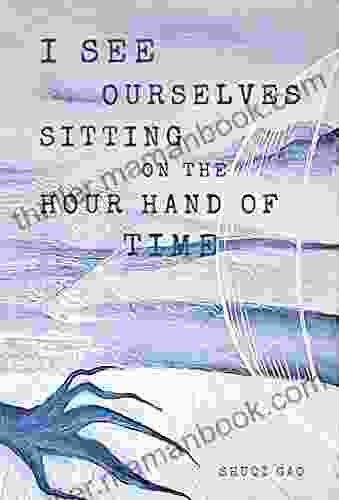The Ultimate Guide to Capturing Picture-Perfect Photos of Paintings

4.3 out of 5
| Language | : | English |
| File size | : | 6500 KB |
| Text-to-Speech | : | Enabled |
| Screen Reader | : | Supported |
| Enhanced typesetting | : | Enabled |
| Print length | : | 18 pages |
| Lending | : | Enabled |
Paintings are captivating works of art that evoke emotions, tell stories, and transport us to different worlds. Preserving the beauty of paintings through photography allows us to share their impact with others and cherish them for generations to come. However, capturing high-quality photographs of paintings requires a keen eye and a mastery of specific techniques.
In this comprehensive guide, we will delve into the essential aspects of photographing paintings, from choosing the right equipment to post-processing your images. Whether you're an aspiring art photographer or simply want to document your favorite paintings, this guide will provide you with the knowledge and skills to achieve stunning results.
Equipment
The choice of equipment plays a crucial role in capturing sharp, vibrant photographs of paintings. Here's what you need:
Camera
A DSLR or mirrorless camera with manual controls is ideal. These cameras offer greater flexibility in adjusting exposure, aperture, and shutter speed, ensuring that you can capture the painting's details and colors accurately.
Lens
A wide-angle lens is typically used for photographing paintings to capture the entire artwork in a single frame. Lenses with focal lengths between 16mm and 35mm are ideal for most paintings.
Tripod
A tripod is essential for stability, especially when photographing paintings in low-light conditions. It prevents camera shake and ensures sharp images.
Lighting
Proper lighting is paramount in painting photography. Natural light is often the best choice, but artificial lighting may be required in museums or galleries.
Natural Light
Natural light provides soft, diffused illumination that enhances the texture and brushstrokes of paintings. Shoot in the morning or evening when the light is softer and more flattering.
Artificial Light
Artificial light can be used to supplement or replace natural light. Use LED lights or halogen lamps to provide consistent, glare-free illumination.
Composition
Composition is the arrangement of elements within a photograph. Consider the following guidelines when composing your shot:
Straighten the Painting
Ensure that the painting is straight and level in your frame. Use the gridlines on your camera's LCD screen to align the painting's edges.
Distance from the Painting
Depending on the size and style of the painting, you may need to adjust the distance between your camera and the artwork. Step back for a wide-angle shot or move closer for a more detailed view.
Using Leading Lines and Angles
Use architectural elements or objects within the painting to create leading lines that draw the viewer's eye towards the focal point. Explore different angles to capture unique perspectives.
Post-Processing
Post-processing is an essential step in enhancing your photographs and bringing out the best in the painting's colors and details.
Exposure and Color Correction
Adjust the exposure to ensure that the painting's details are visible and the colors are accurate. Use color correction tools to balance the white balance and eliminate any color casts.
Sharpening and Noise Reduction
Sharpening enhances the edges and details of the painting. However, avoid over-sharpening, which can create artifacts. Noise reduction can minimize visual noise, especially in low-light photographs.
Cropping and Straightening
Crop the image to remove any distracting elements and enhance the composition. Use the straightening tool to correct any tilt in the image.
Capturing picture-perfect photographs of paintings requires a combination of technical expertise and artistic vision. By mastering the equipment, lighting techniques, composition principles, and post-processing skills described in this guide, you can create stunning images that capture the beauty and essence of paintings.
Remember to practice regularly, experiment with different approaches, and seek inspiration from other photographers. With patience and perseverance, you will develop the skills and knowledge to produce exceptional photographs that preserve the legacy of these cherished art forms for generations to come.
4.3 out of 5
| Language | : | English |
| File size | : | 6500 KB |
| Text-to-Speech | : | Enabled |
| Screen Reader | : | Supported |
| Enhanced typesetting | : | Enabled |
| Print length | : | 18 pages |
| Lending | : | Enabled |
Do you want to contribute by writing guest posts on this blog?
Please contact us and send us a resume of previous articles that you have written.
 Top Book
Top Book Novel
Novel Fiction
Fiction Nonfiction
Nonfiction Literature
Literature Paperback
Paperback Hardcover
Hardcover E-book
E-book Audiobook
Audiobook Bestseller
Bestseller Classic
Classic Mystery
Mystery Thriller
Thriller Romance
Romance Fantasy
Fantasy Science Fiction
Science Fiction Biography
Biography Memoir
Memoir Autobiography
Autobiography Poetry
Poetry Drama
Drama Historical Fiction
Historical Fiction Self-help
Self-help Young Adult
Young Adult Childrens Books
Childrens Books Graphic Novel
Graphic Novel Anthology
Anthology Series
Series Encyclopedia
Encyclopedia Reference
Reference Guidebook
Guidebook Textbook
Textbook Workbook
Workbook Journal
Journal Diary
Diary Manuscript
Manuscript Folio
Folio Pulp Fiction
Pulp Fiction Short Stories
Short Stories Fairy Tales
Fairy Tales Fables
Fables Mythology
Mythology Philosophy
Philosophy Religion
Religion Spirituality
Spirituality Essays
Essays Critique
Critique Commentary
Commentary Glossary
Glossary Bibliography
Bibliography Index
Index Table of Contents
Table of Contents Preface
Preface Introduction
Introduction Foreword
Foreword Afterword
Afterword Appendices
Appendices Annotations
Annotations Footnotes
Footnotes Epilogue
Epilogue Prologue
Prologue Ted Seides
Ted Seides Scott Ingram
Scott Ingram Fotini Copeland
Fotini Copeland Annette Elton
Annette Elton Wayne Stinnett
Wayne Stinnett Lena Little
Lena Little Lara Smithe
Lara Smithe Annette Lacroix
Annette Lacroix Peter O Mahoney
Peter O Mahoney Lakota Grace
Lakota Grace Ronald D Miller
Ronald D Miller Cheryl Strayed
Cheryl Strayed Timothy Peak
Timothy Peak J M Ney Grimm
J M Ney Grimm Wendy Conklin
Wendy Conklin Cadfolks
Cadfolks Joe Haldeman
Joe Haldeman Simone Muench
Simone Muench Gad Saad
Gad Saad April Hazard Vallerand
April Hazard Vallerand
Light bulbAdvertise smarter! Our strategic ad space ensures maximum exposure. Reserve your spot today!

 George Bernard ShawBeing Human in the Age of Artificial Intelligence: A Journey of Adaptation...
George Bernard ShawBeing Human in the Age of Artificial Intelligence: A Journey of Adaptation...
 Alexandre DumasWhat to Do and How to Do It: A Comprehensive Guide to Accomplishing Anything
Alexandre DumasWhat to Do and How to Do It: A Comprehensive Guide to Accomplishing Anything E.E. CummingsFollow ·8.8k
E.E. CummingsFollow ·8.8k Owen SimmonsFollow ·19.7k
Owen SimmonsFollow ·19.7k Arthur Conan DoyleFollow ·10.1k
Arthur Conan DoyleFollow ·10.1k Edgar HayesFollow ·11.1k
Edgar HayesFollow ·11.1k Jonathan FranzenFollow ·11.4k
Jonathan FranzenFollow ·11.4k Benjamin StoneFollow ·2.2k
Benjamin StoneFollow ·2.2k Ernesto SabatoFollow ·4k
Ernesto SabatoFollow ·4k Milton BellFollow ·10.5k
Milton BellFollow ·10.5k

 Caleb Carter
Caleb CarterThe Complete Beagle Dog Beginners Guide: Beagle Facts,...
Beagles are...

 Gage Hayes
Gage HayesThe Origins and Evolution of No Child Left Behind:...
The No Child Left Behind...

 George Martin
George MartinThe Love Pirates: A Swashbuckling Tale of Love,...
The Love Pirates is a thrilling...

 Nathaniel Hawthorne
Nathaniel HawthorneDifferentiating the Curriculum for Gifted Learners:...
Gifted learners are...

 Carlos Fuentes
Carlos FuentesThe Years of Rice and Salt: A Journey Through a Forgotten...
The Years of Rice and Salt is...

 Herbert Cox
Herbert CoxThe Intricate Design of Clothing Manufacturing Processes:...
The clothing industry is a vast and...
4.3 out of 5
| Language | : | English |
| File size | : | 6500 KB |
| Text-to-Speech | : | Enabled |
| Screen Reader | : | Supported |
| Enhanced typesetting | : | Enabled |
| Print length | : | 18 pages |
| Lending | : | Enabled |








